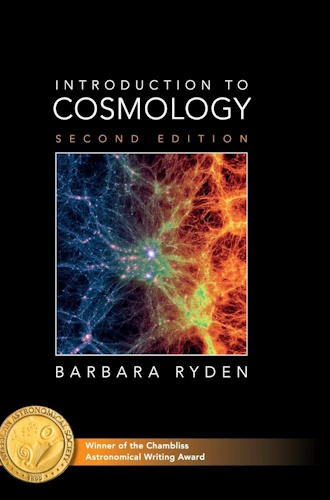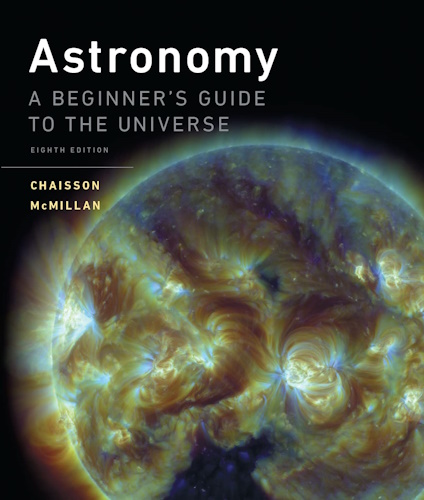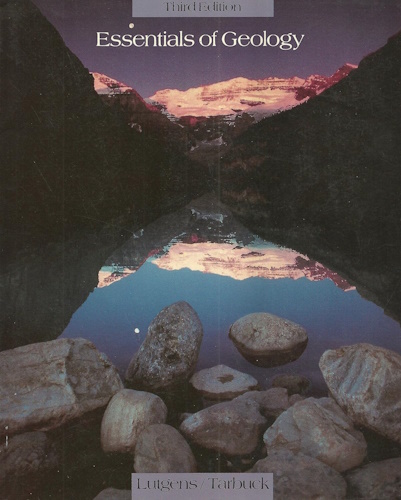
science (sci·ence) - noun.
2. systematic knowledge of the physical or material world gained
through observation and experimentation.
TABLE OF CONTENTS
-
- Archaeology - the scientific study of historic or prehistoric peoples and their cultures by analysis of their artifacts, inscriptions, monuments, and other such remains, especially those that have been excavated.
- The Importance of Questioning History: From Malta to the Dead Sea Scrolls
- Painted Caves of Lascaux
- Gobekli Tepe Report by Halbert Katzen, J.D.
The Urantia Book provides a history of humanity that harmonizes perfectly well with the discoveries being made at Gobekli Tepe. It presents an explanation of the Gobekli Tepe mysteries in terms of an Adam and Eve story that varies significantly from the Old Testament record, but, which the authors assert, is nonetheless the basis for many of our myths and religious traditions about the origins of humanity. Not surprisingly, because of the unusual nature and age of this archaeological site, scholars quickly began speculating on how it may relate to the religious traditions about Adam and Eve. - Was Israel the birthplace of modern man?
- Lost civilization under Persian Gulf?
- New Light on Human Prehistory in the Arabo-Persian Gulf Oasis
- See the .pdf version: New Light on Human Prehistory in the Arabo-Persian Gulf Oasis

- See the .pdf version: New Light on Human Prehistory in the Arabo-Persian Gulf Oasis
- Modern Humans Reached Arabia Earlier Than Thought
- Texas Artifacts May Rewrite History
- Ancient Tool Kit - Humans Settled North America Earlier Than Thought
- Ancient Struggle Over Holy Land Supremacy
- Archaeology - the scientific study of historic or prehistoric peoples and their cultures by analysis of their artifacts, inscriptions, monuments, and other such remains, especially those that have been excavated.
-
- Anthropology - The scientific study of the origin, the behavior, and the physical, social, and cultural development of human beings.
- The Human Skull That Challenges The Out of Africa Theory
- Research on the Double Dual Origin of Modern Man and pre-Modern Man by Halbert Katzen, J.D.
- Adam and Eve Report by Halbert Katzen, J.D.
- Eugenics, Race, and The Urantia Book by Halbert Katzen, J.D.
- A Twisted History: The Double Helix of DNA and Genesis
- In the Bones of a Buried Child, Signs of a Massive Human Migration to the Americas
- Going Where Darwin Feared to Tread - Decoding the History of Human Evolution
- Ardipithecus Ramidus - Potential Human Ancestor
- Modern Humans Reached Arabia Earlier than Thought
- The Golden Age, Psychopathy and the Sixth Extinction
- Anthropology - The scientific study of the origin, the behavior, and the physical, social, and cultural development of human beings.
-
- Cosmology - The world or universe regarded as an orderly, harmonious system.
- Cosmology - The world or universe regarded as an orderly, harmonious system.
-
- Geology - The scientific study of the origin, history, and structure of the earth.
- Garden of Eden Report by Halbert Katzen, J.D.
- The Case of the Permian Extinction
- The Great Dying
- Geology - The scientific study of the origin, history, and structure of the earth.
-
- Other
- The Urantia Book Scientific Discoveries by Dr. Kary Banks Mullis
Dr. Kary Mullis received a Nobel Prize in chemistry in 1993, for his invention of the polymerase chain reaction (PCR). The process, which Kary Mullis conceptualized in 1983, is hailed as one of the monumental scientific techniques of the twentieth century. The polymerase chain reaction, an elegant way to make copies of a DNA strand using the enzyme polymerase and some basic DNA "building blocks," opened the door to more in-depth study of DNA — like the Human Genome Project. Mullis shared the 1993 Nobel Prize in Chemistry for developing this technique. - The Hydro-Plate Theory and The Great Flood
- Quantum Cold-Case Mysteries Revisited by Lane Davis
- Exopolitics and the Human Genome Project
- Corruption of Science in America
- Annals of Earth by Dan Sewell Ward
- The Urantia Book Scientific Discoveries by Dr. Kary Banks Mullis
- Other
![]()
![]()
Disclaimer:
Some material presented will contain links, quotes, ideologies, etc., the contents of which should be understood to first, in their whole, reflect the views or opinions of their editors, and second, are used in my personal research as "fair use" sources only, and not espousement one way or the other. Researching for 'truth' leads one all over the place...a piece here, a piece there. As a researcher, I hunt, gather and disassemble resources, trying to put all the pieces into a coherent and logical whole. I encourage you to do the same. And please remember, these pages are only my effort to collect all the pieces I can find and see if they properly fit into the 'reality aggregate'.
Personal Position:
I've come to realize that 'truth' boils down to what we 'believe' the facts we've gathered point to. We only 'know' what we've 'experienced' firsthand. Everything else - what we read, what we watch, what we hear - is what someone else's gathered facts point to and 'they' 'believe' is 'truth', so that 'truth' seems to change in direct proportion to newly gathered facts divided by applied plausibility. Though I believe there is 'truth', until someone representing the celestial realm visibly appears and presents the heavenly records of Facts And Lies In The Order They Happened, I can't know for sure exactly what "the whole truth' on any given subject is, and what applies to me applies to everyone. Until then I'll continue to ask, "what does The Urantia Book say on the subject?"
~Gail Bird Allen
![]()
![]()
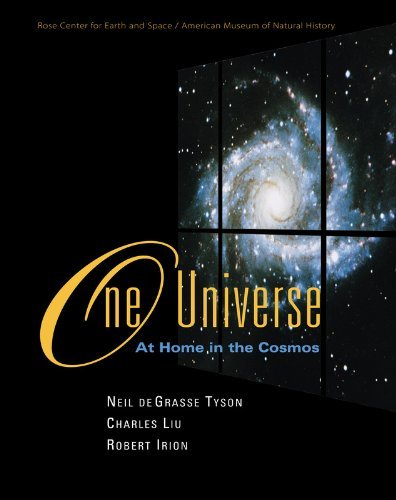
One Universe: At Home in the Cosmos
Review: From Publishers Weekly
Startling, sparkling color photos and very accessible explanations of the laws and history of physics make this book a treat. Its pictures, clean diagrams, spiffy typography and bite-size takes on mass and energy--from quarks to Coriolis effects to quasars--mark its origins in a celebration: the volume coincides with the reopening of the Hayden Planetarium at Manhattan's American Museum of Natural History. Tyson (who runs the planetarium), Liu (a physicist at the museum) and Irion (a contributing editor at Science) make the science they explain sound both awesome and painless. The authors begin and end at the cosmological level, with the Big Bang and the expanding universe; in between, they cover black holes, meteor strikes, spectral lines, particle accelerators, "gravity waves" (which astronomers might find soon), extraterrestrial life (we're still looking) and the elusive particle called the Higgs boson (ditto). The expanding universe (in which galaxies constantly move apart from one another) gets illustrated with ladybugs on the surface of a balloon. Zippy orange computer-enhanced photos show how a solar system can coalesce from "a disk of leftover material swirling around a new star." A "hyperkinetic unicyclist" helps explain Einstein's special relativity. And sandy beachside toes, shown next to a potholder and an iron pan, illustrate how nonconducting materials prevent, while conducting materials facilitate, the transmission of heat. This is a book seemingly designed more to be browsed than to be read straight through, and it might not mind just being admired (especially if it sends readers to the planetarium). A glossary and timeline can help readers learn, look up and remember the info so many physicists worked hard to discover. 30,000 first printing. (Mar.) Copyright 2000 Reed Business Information, Inc. Hardcover: 224 pages
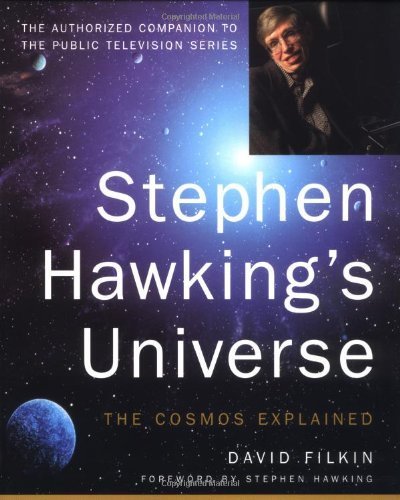 Stephen Hawking's Universe: The Cosmos Explained
Stephen Hawking's Universe: The Cosmos Explained
Product Description:
Stephen Hawking’s A Brief History of Time has sold over 9 million copies worldwide. Now, in everyday language, Stephen Hawking’s Universe reveals step-by-step how we can all share his understanding of the cosmos, and our own place within it. Stargazing has never been the same since cosmologists discovered that galaxies are moving away from each other at an extraordinary speed. It was this understanding of the movement of galaxies that allowed scientists to develop a theory of how the universe was created—the Big Bang theory. Working with this theory, Stephen Hawking and other physicists felt challenged to come up with a scientific picture that would tackle the fundamental question: what is the nature of the universe? Stephen Hawking’s Universe charts this work and provides simple explanations for phenomena that arouse our curiosity. This work is a voyage of discovery with an astonishing set of conclusions that will enable us to understand how matter can be produced from nothing at all and will provide us with an explanation for the basis of our existence and that of everything around us. Softcover: 304 pages
-
Urantia Book, 44:0.11 - The Celestial Artisans
Never in your long ascendancy will you lose the power to recognize your associates of former existences. Always, as you ascend inward in the scale of life, will you retain the ability to recognize and fraternize with the fellow beings of your previous and lower levels of experience. Each new translation or resurrection will add one more group of spirit beings to your vision range without in the least depriving you of the ability to recognize your friends and fellows of former estates.
-
Princess Bride 1987 Wallace Shawn (Vizzini) and Mandy Patinkin (Inigo Montoya)
Vizzini: HE DIDN'T FALL? INCONCEIVABLE.
Inigo Montoya: You keep using that word. I do not think it means what you think it means. -
Urantia Book, 117:4.14 - The Finite God
And here is mystery: The more closely man approaches God through love, the greater the reality -- actuality -- of that man. The more man withdraws from God, the more nearly he approaches nonreality -- cessation of existence. When man consecrates his will to the doing of the Father's will, when man gives God all that he has, then does God make that man more than he is.
-
Urantia Book, 167:7.4 - The Talk About Angels
"And do you not remember that I said to you once before that, if you had your spiritual eyes anointed, you would then see the heavens opened and behold the angels of God ascending and descending? It is by the ministry of the angels that one world may be kept in touch with other worlds, for have I not repeatedly told you that I have other sheep not of this fold?"
-
Urantia Book, Foreword - 0:12.12 - The Trinities
But we know that there dwells within the human mind a fragment of God, and that there sojourns with the human soul the Spirit of Truth; and we further know that these spirit forces conspire to enable material man to grasp the reality of spiritual values and to comprehend the philosophy of universe meanings. But even more certainly we know that these spirits of the Divine Presence are able to assist man in the spiritual appropriation of all truth contributory to the enhancement of the ever-progressing reality of personal religious experience—God-consciousness.
-
Urantia Book, 1:4.3 - The Mystery Of God
When you are through down here, when your course has been run in temporary form on earth, when your trial trip in the flesh is finished, when the dust that composes the mortal tabernacle "returns to the earth whence it came"; then, it is revealed, the indwelling "Spirit shall return to God who gave it." There sojourns within each moral being of this planet a fragment of God, a part and parcel of divinity. It is not yet yours by right of possession, but it is designedly intended to be one with you if you survive the mortal existence.
-
Urantia Book, 1:4.1 - The Mystery Of God
And the greatest of all the unfathomable mysteries of God is the phenomenon of the divine indwelling of mortal minds. The manner in which the Universal Father sojourns with the creatures of time is the most profound of all universe mysteries; the divine presence in the mind of man is the mystery of mysteries.
-
Urantia Book, 1:4.6 - The Mystery Of God
To every spirit being and to every mortal creature in every sphere and on every world of the universe of universes, the Universal Father reveals all of his gracious and divine self that can be discerned or comprehended by such spirit beings and by such mortal creatures. God is no respecter of persons, either spiritual or material. The divine presence which any child of the universe enjoys at any given moment is limited only by the capacity of such a creature to receive and to discern the spirit actualities of the supermaterial world.
-
Urantia Book, 11:0.1 - The Eternal Isle Of Paradise
Paradise is the eternal center of the universe of universes and the abiding place of the Universal Father, the Eternal Son, the Infinite Spirit, and their divine co-ordinates and associates. This central Isle is the most gigantic organized body of cosmic reality in all the master universe. Paradise is a material sphere as well as a spiritual abode. All of the intelligent creation of the Universal Father is domiciled on material abodes; hence must the absolute controlling center also be material, literal. And again it should be reiterated that spirit things and spiritual beings are real.
-
Urantia Book, 50:6.4 - Planetary Culture
Culture presupposes quality of mind; culture cannot be enhanced unless mind is elevated. Superior intellect will seek a noble culture and find some way to attain such a goal. Inferior minds will spurn the highest culture even when presented to them ready-made.
-
Urantia Book, 54:1.6 - True And False Liberty
True liberty is the associate of genuine self-respect; false liberty is the consort of self-admiration. True liberty is the fruit of self-control; false liberty, the assumption of self-assertion. Self-control leads to altruistic service; self-admiration tends towards the exploitation of others for the selfish aggrandizement of such a mistaken individual as is willing to sacrifice righteous attainment for the sake of possessing unjust power over his fellow beings.
-
Urantia Book, 54:1.9 - True And False Liberty
How dare the self-willed creature encroach upon the rights of his fellows in the name of personal liberty when the Supreme Rulers of the universe stand back in merciful respect for these prerogatives of will and potentials of personality! No being, in the exercise of his supposed personal liberty, has a right to deprive any other being of those privileges of existence conferred by the Creators and duly respected by all their loyal associates, subordinates, and subjects.
-
Urantia Book, 54:1.8 - True And False Liberty
There is no error greater than that species of self-deception which leads intelligent beings to crave the exercise of power over other beings for the purpose of depriving these persons of their natural liberties. The golden rule of human fairness cries out against all such fraud, unfairness, selfishness, and unrighteousness.
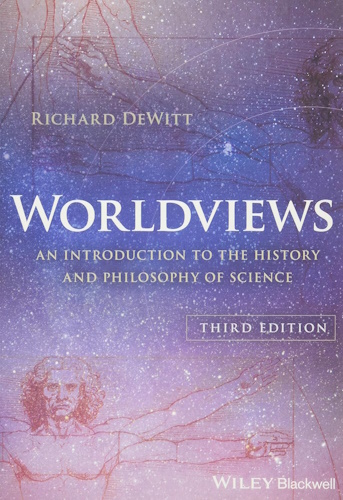

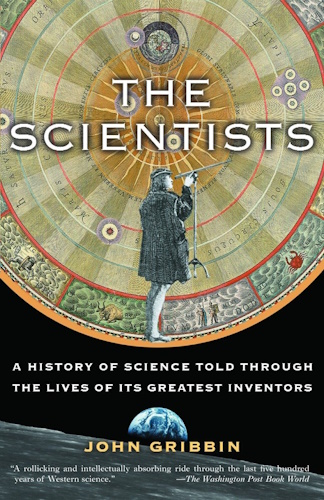

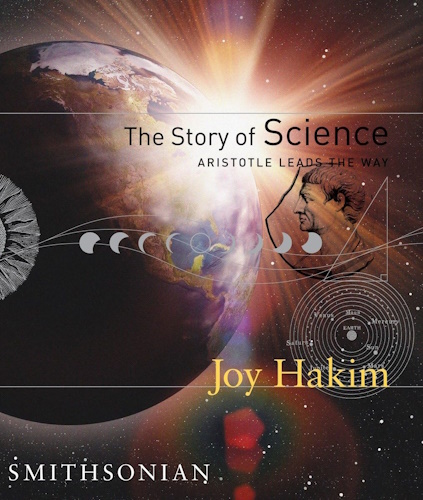




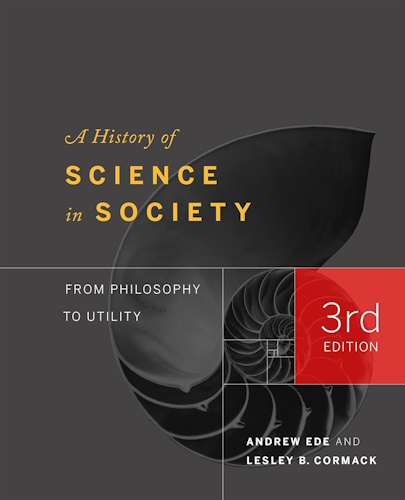

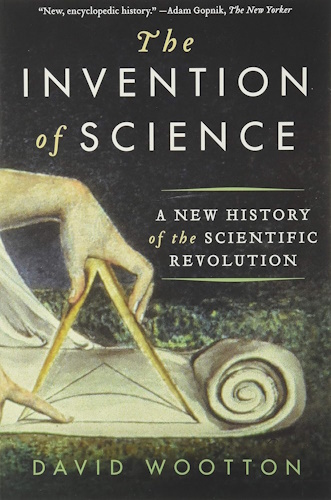

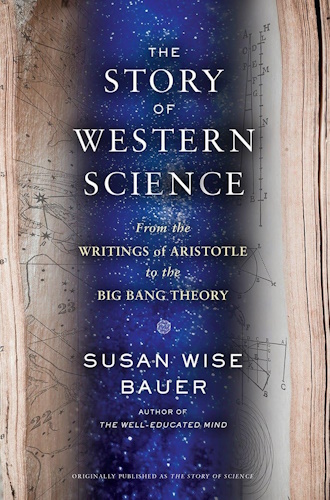

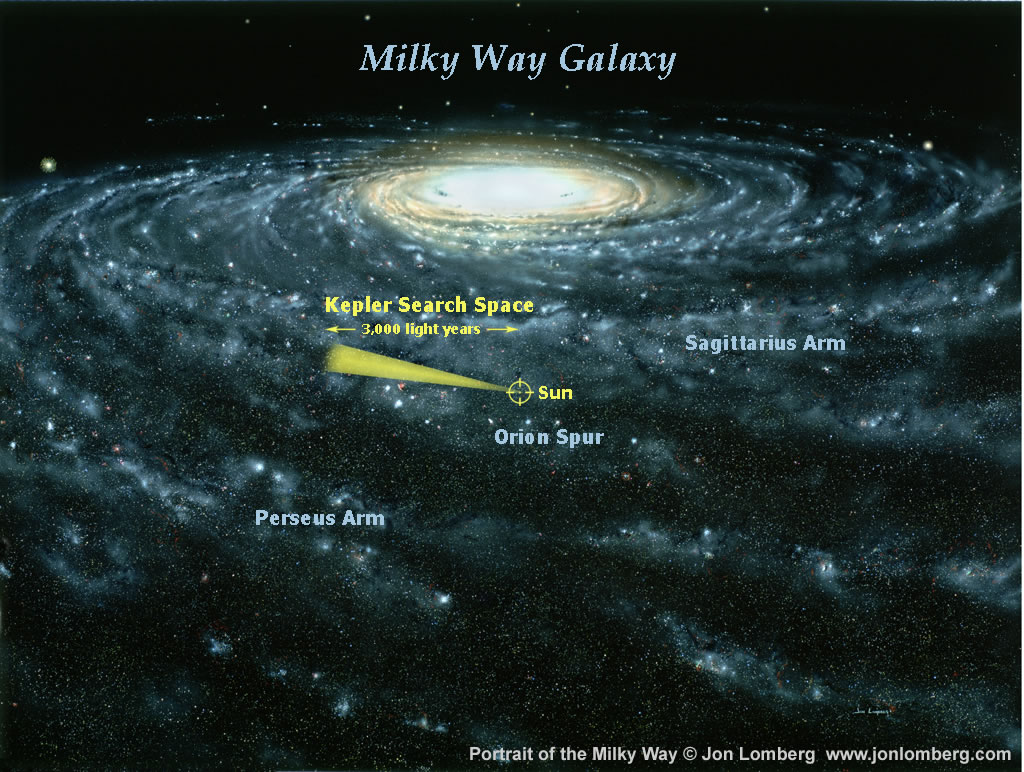



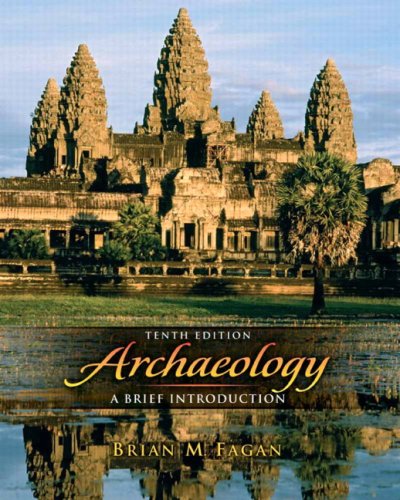

 Are We Alone?
Are We Alone?